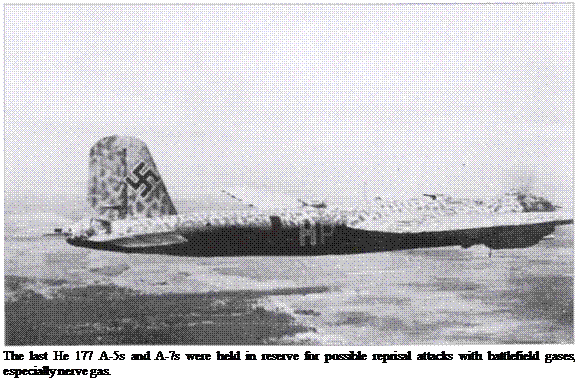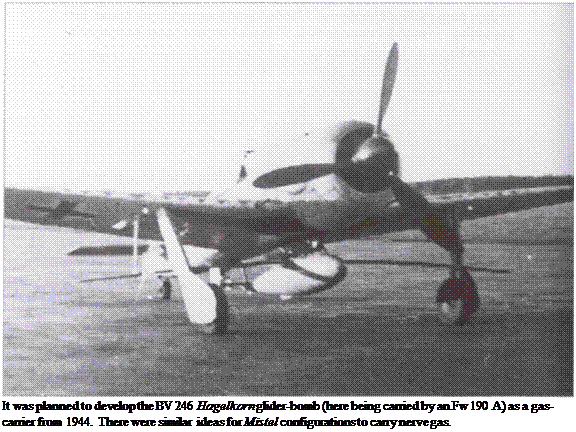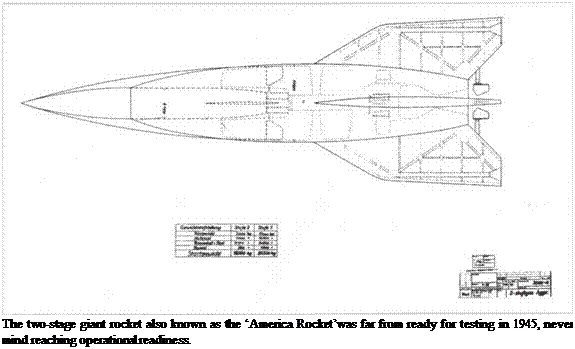Chemical and Bacteriological Weapons
Despite the appalling experiences with chemical weapons to which troops of all belligerents had been exposed in the First World War, similar weapons were developed and improved after 1918 by the victors. Germany’s chemists had worked on tear gases such as xylyl bromide, then increasingly on anti-respiratory agents such as chlorine. Next came mustard gas and the dangerous lewisite, then the poisonous arsine or chlorzyan. Most gases were released to drift with favourable winds or were fired in artillery shells. Germany had been forbidden to have battlefield gases by the 1919 Versailles Treaty (and battlefield gases were declared illegal universally in 1925), but work progressed in secret and noxious substances which were easy to store, simple to fabricate and lethal were developed in laboratories. Deadly nerve gases such as sarin, soman and tabun were also produced in quantity.
In the late summer of 1939, the Luftwaffe had phosgene, tabun, several kinds of mustard gas and so called ‘mask-breakers’ (irritant gases which forced the wearer to remove his gas-mask and so expose himself to a far more dangerous
back-up gas). All these gases could be dropped operationally in cylindrical containers (КС). Apart from the КС 50 bomb, the standard weapons for this were the КС 250 and КС 500. One of the most dangerous was КС 250 IIGr filled with 100 kg of tabun. Germany produced almost 60,000 tonnes of battlefield gases. In the autumn of 1944 the Luftwaffe audit showed an arsenal of 1,160,340 bombs filled with chemicals, 1,600 of these being tabun-filled, 900 heavy КС 1800 with White Cross (tear-gas) and Green Cross (suffocating gas) and 3,600 КС 1000 Green Cross, enough to have laid low whole regions worldwide. Hitler imposed a strict rule that no such weapons were to be used at the front or against civilian targets in enemy territory. Most German chemical bombs were discovered by Allied forces in ammunition depots or underground facilities, such as Stassfurt. At the beginning of 1945 British forces captured a few Ju 88 G-ls and G-6s rigged to carry battlefield-gas payloads. The special containers were examined by British experts to determine their general purpose.

Bacteriological weapons, especially those bearing easily transmissible diseases such as anthrax, went into the arsenals. All belligerents were aware of the dangers of these weapons. Exacdy how much Germany produced, if any, is not known but the research existed. Fortunately there seems to have been some kind of tacit
understanding between the various belligerents that even in defeat they would not resort to chemical or bacteriological weapons.
Rumours

Rumours regarding certain kinds of research were used by the Third Reich leadership. Whether circulated deliberately or in error, these bred new rumours. It was easy to believe that work must be proceeding on larger and more terrible rockets, for example. The new America-Rocket or the solid-fuel counterpart V-101, both armed with a powerful warhead or lethal substance, were bound to strengthen belief in final victory. In the end it was all wishful thinking. There were to be no miracles, nor miracle weapons in a German Reich crumbling to ruin. Belief in a miracle weapon, however, inspired many senior military men to fight on. Even in the Fiihrer-bunker, in the embattled city centre of Berlin, Hitler spoke to his last Luftwaffe Commander-in-Chief, Generalfeldmarschall Ritter von Greim, about the many modern jet aircraft at readiness. Greims task was to

make the Luftwaffe leadership believe that the war was still not lost. It was a similar story with new rockets, death rays and other new weapons which existed only in fantasy. The Propaganda Ministry had no difficulty in convincing many people that weapons which would soon be on hand would bring victory, and whoever did not believe it hoped nevertheless that somehow it might be true.
Many Wehrmacht units kept fighting even when the war was lost and the capitulation was actually in effect. On 8 May 1945 there was aerial fighting in the East over the Erzgebirge mountains between Me 262 A-las of JG 7 and Soviet fighters. That same evening German aircraft attacked Soviet tanks for the last time near Eger (Saaz). In Bohemia, Generalfeldmarschall Schorner’s Army Group tangled on 9 and 10 May in skirmishes with the Red Army and partisans before throwing in the towel and admitting defeat.










